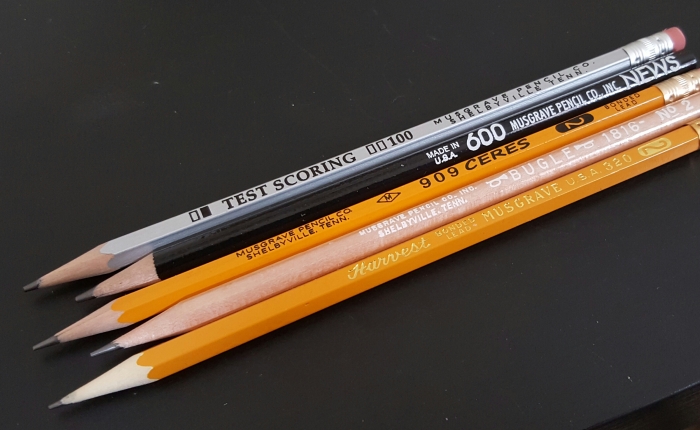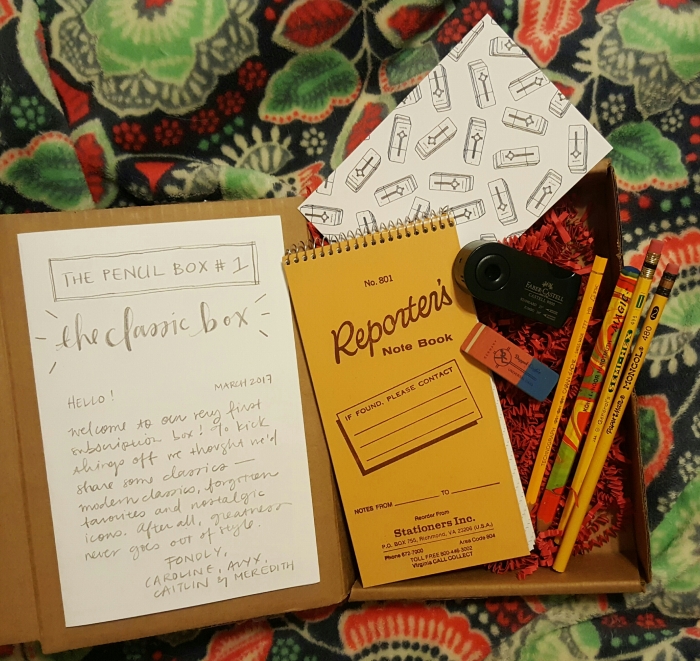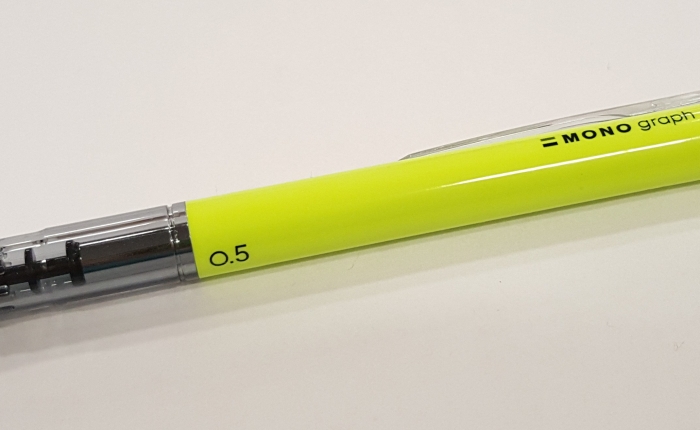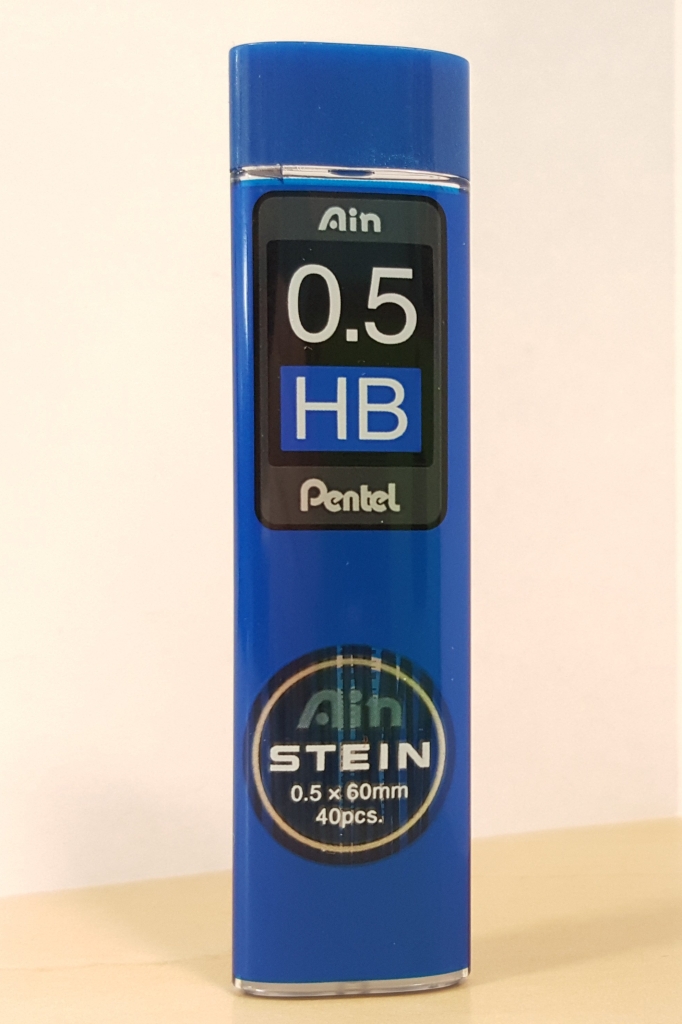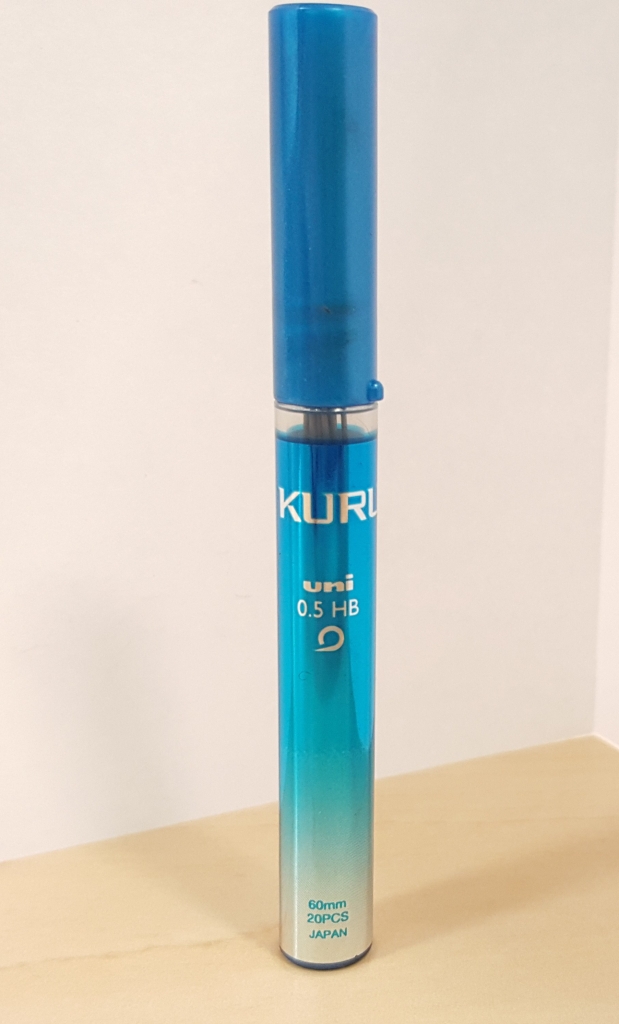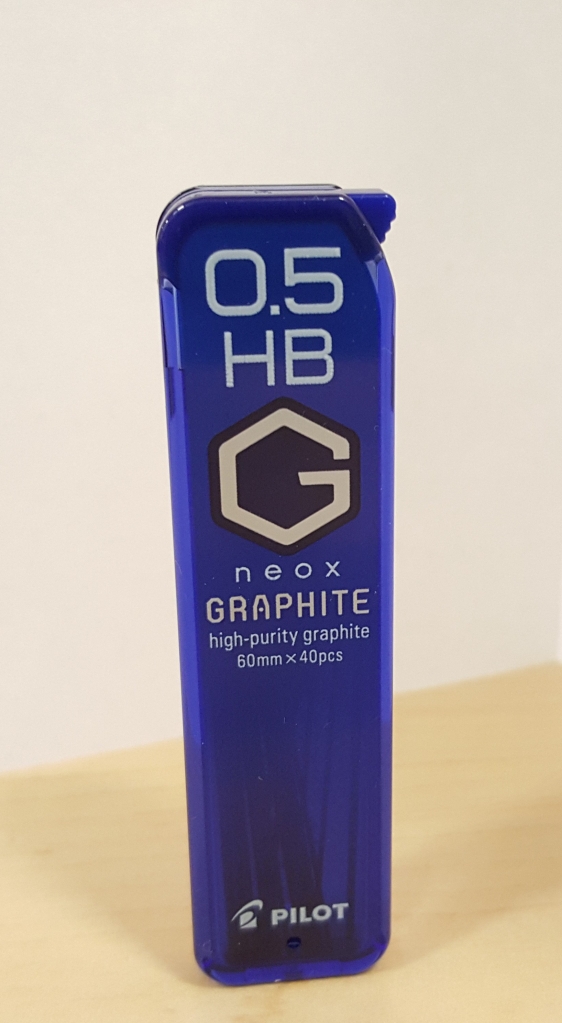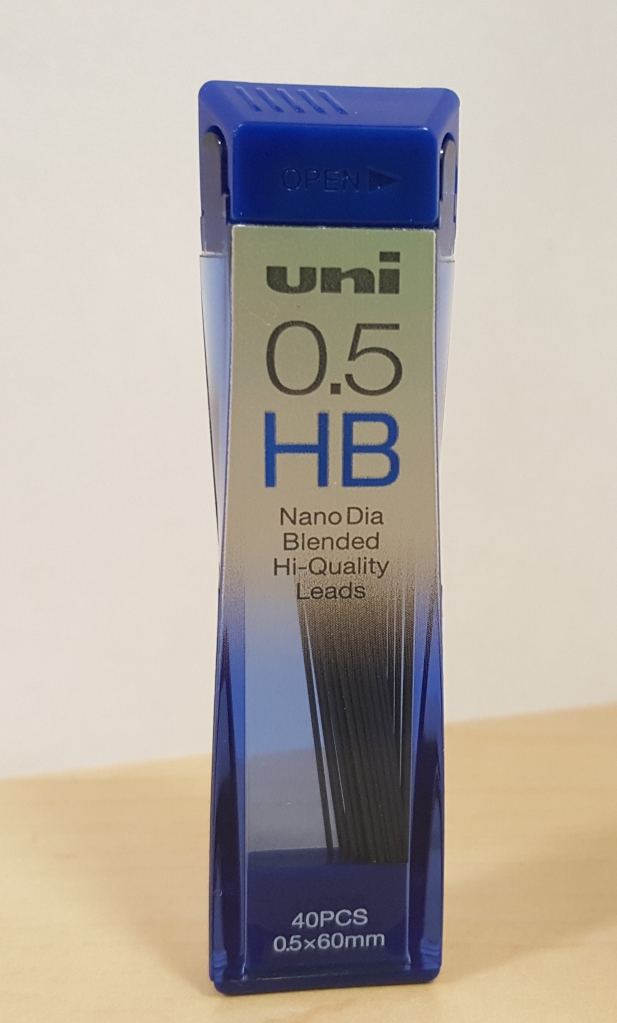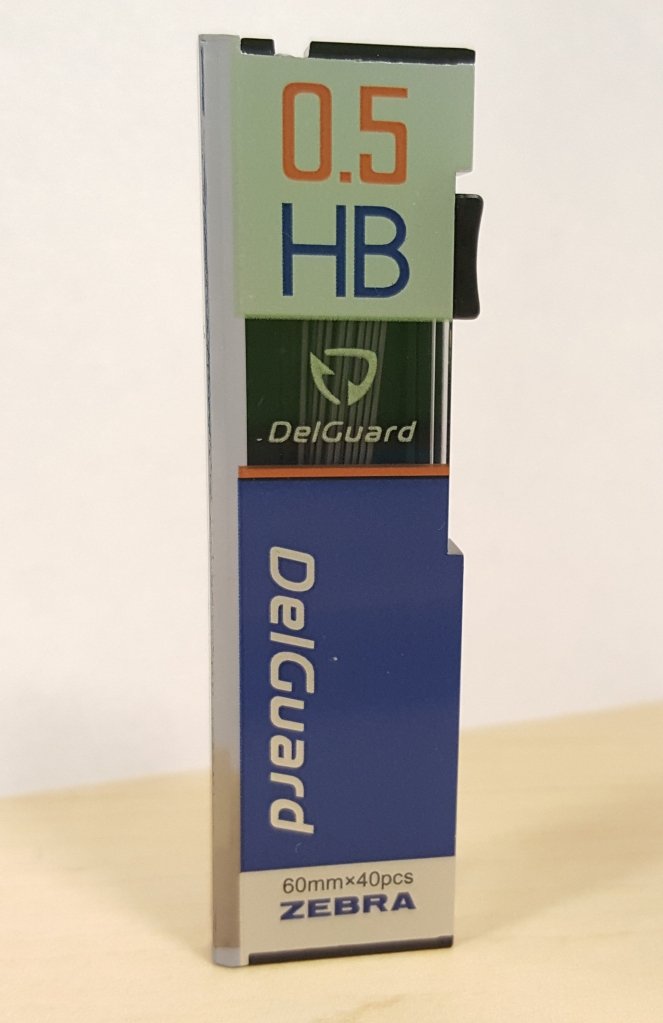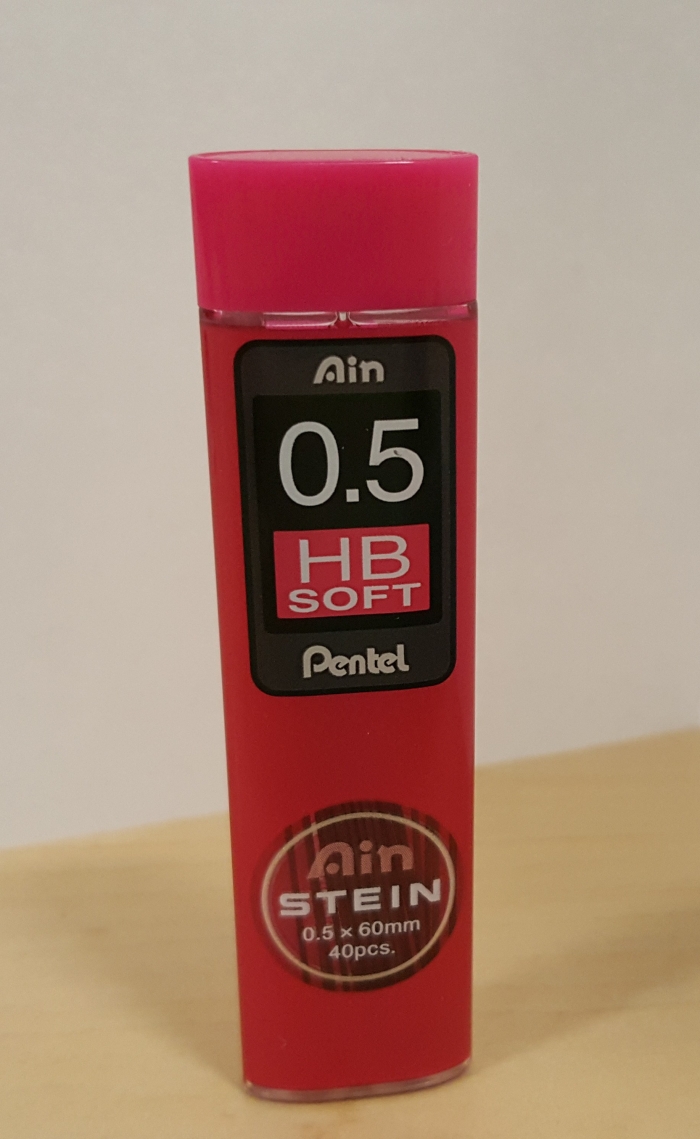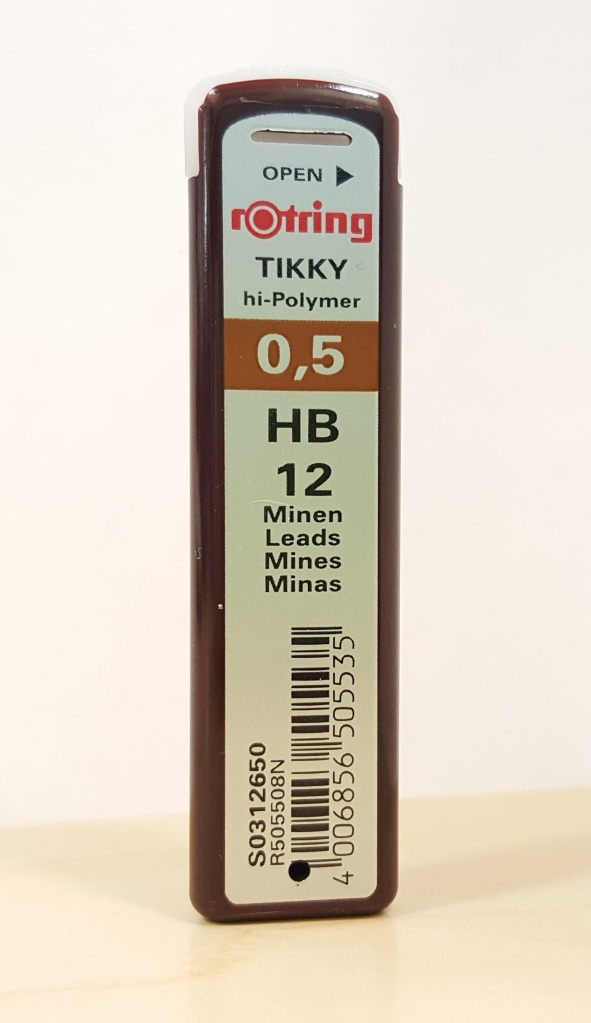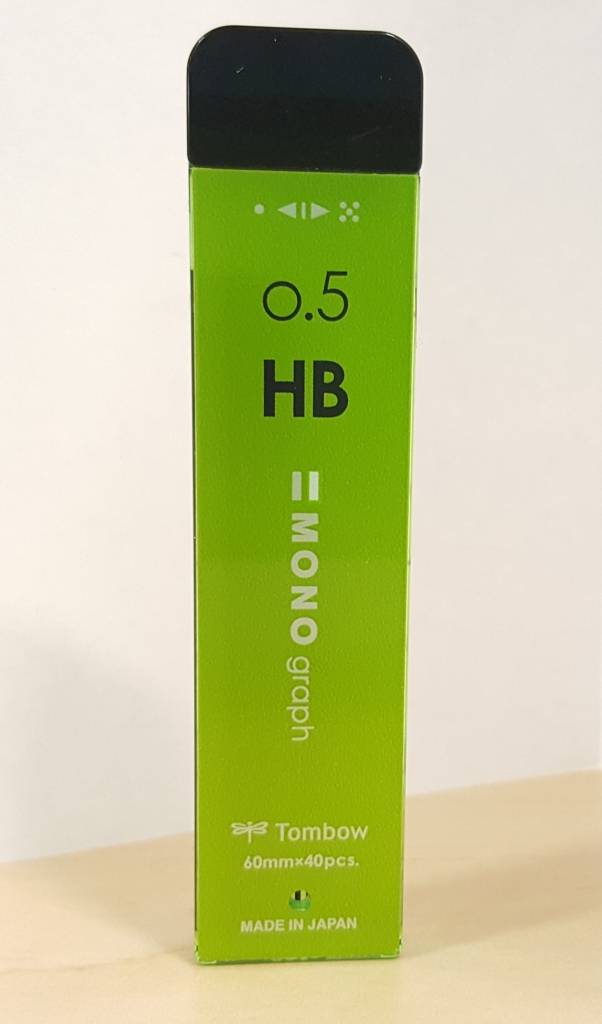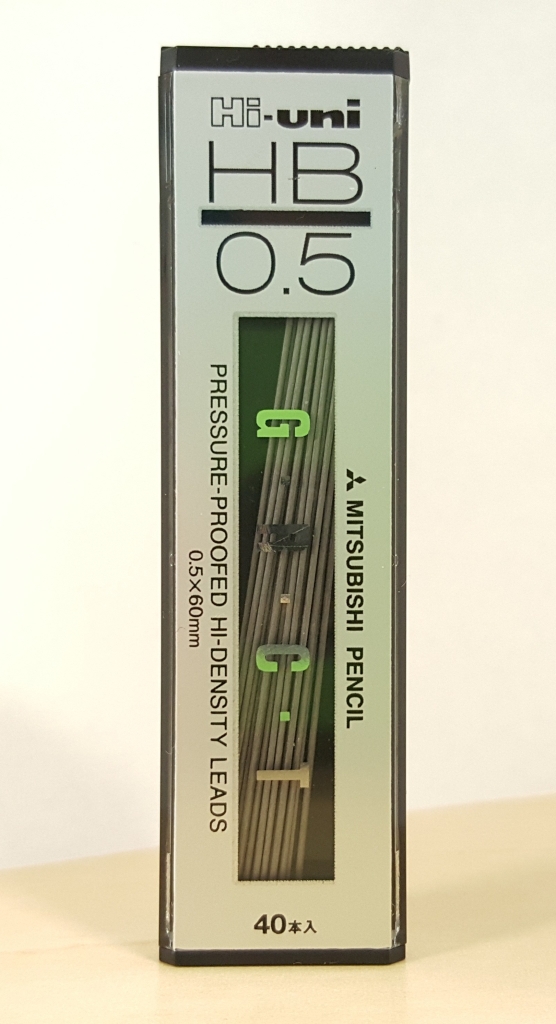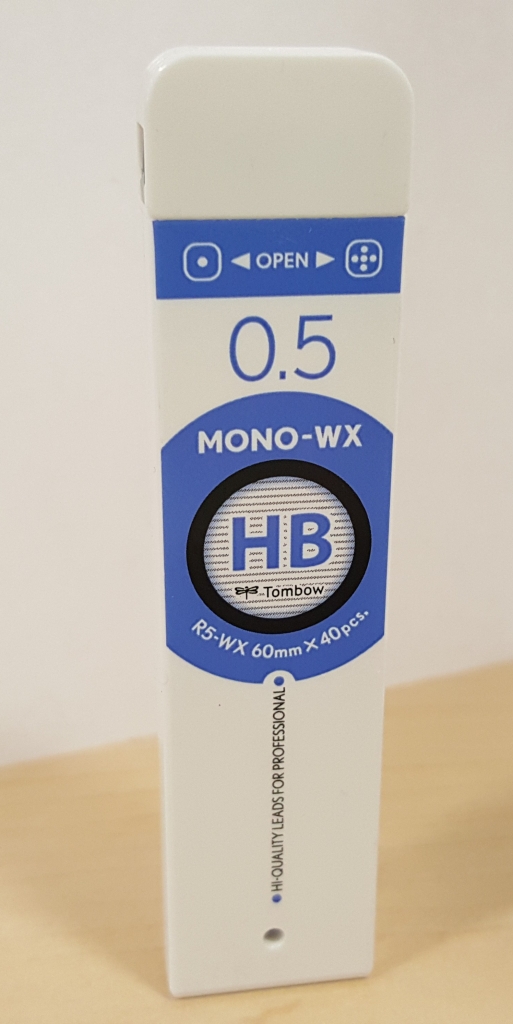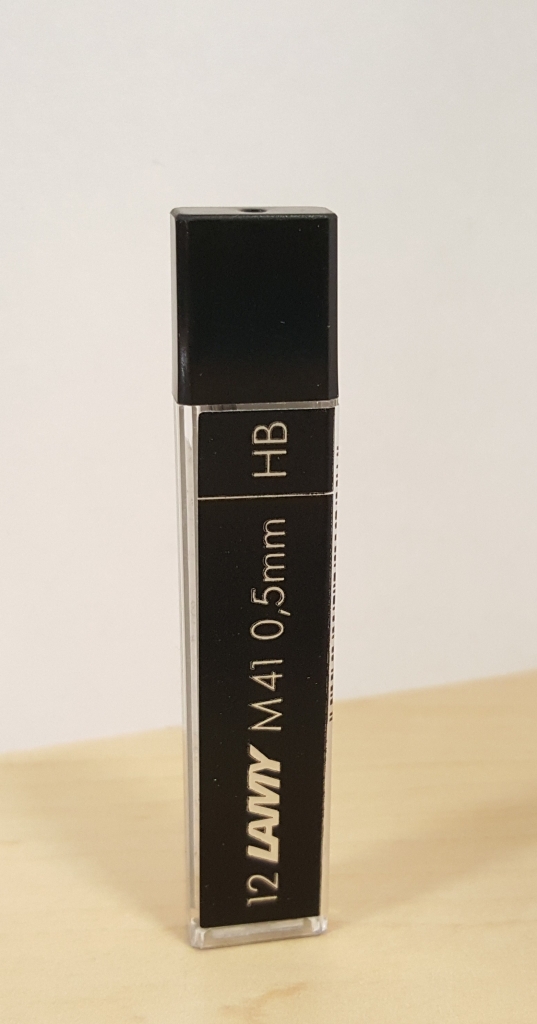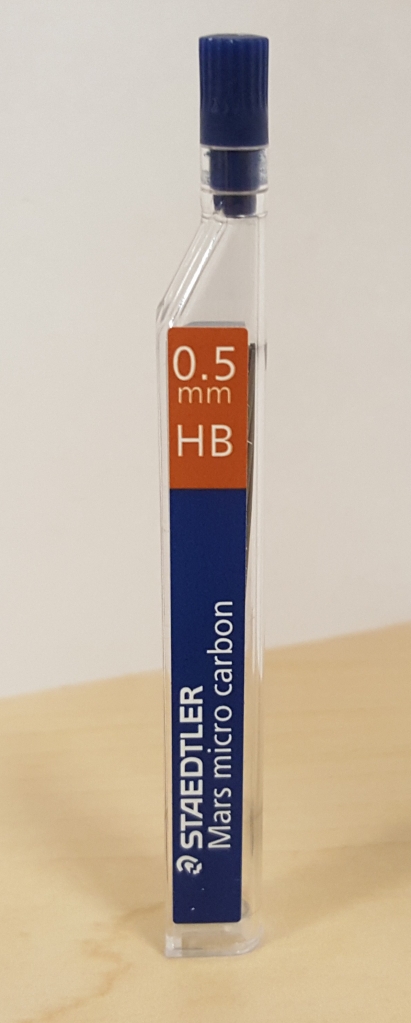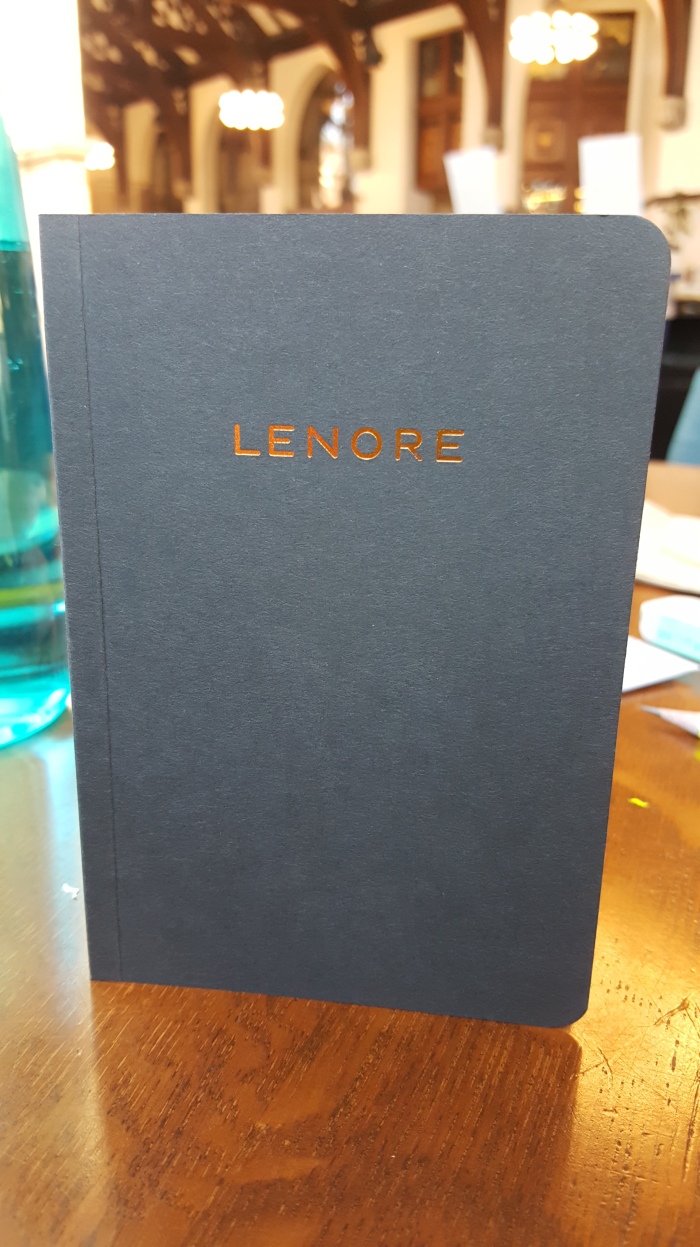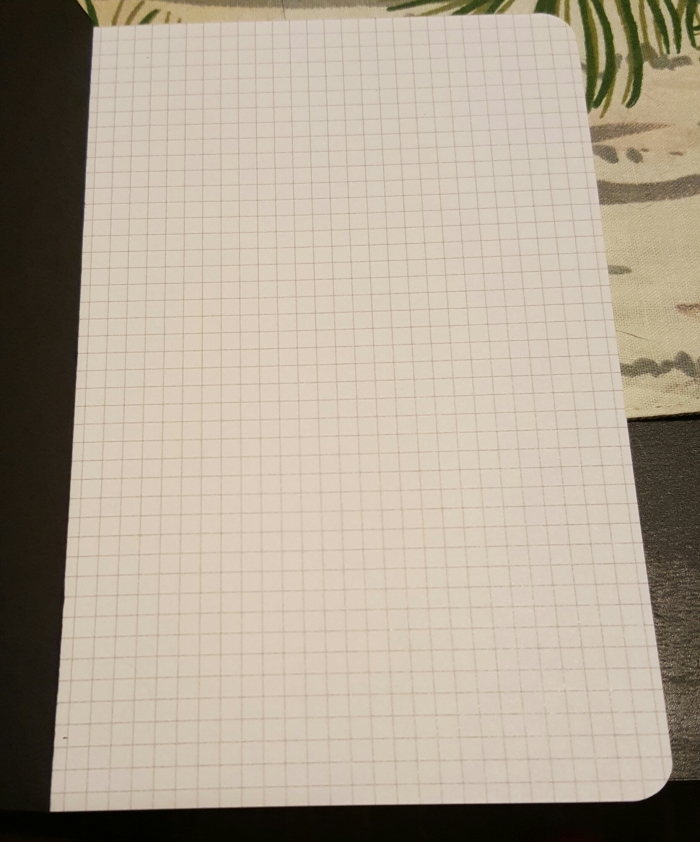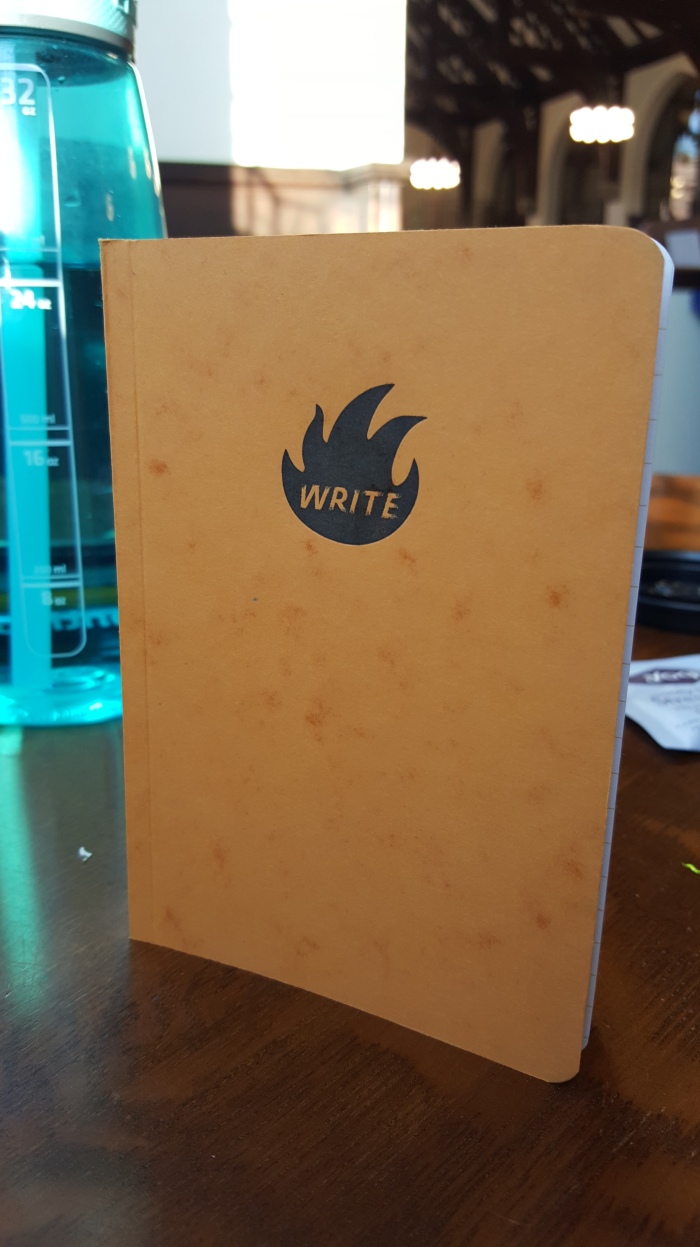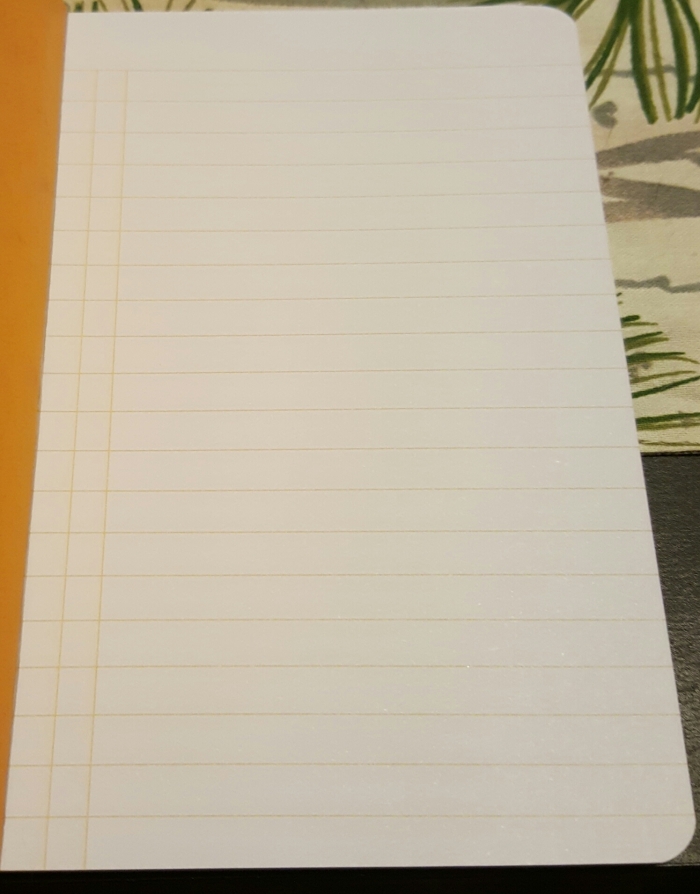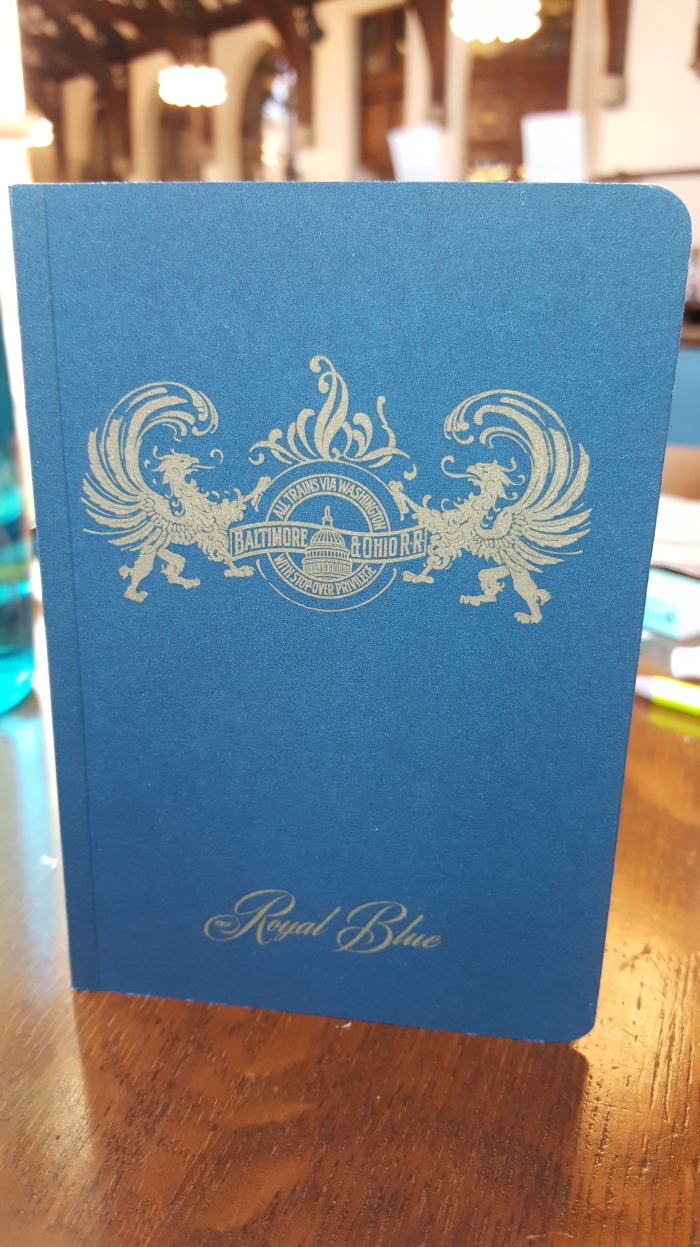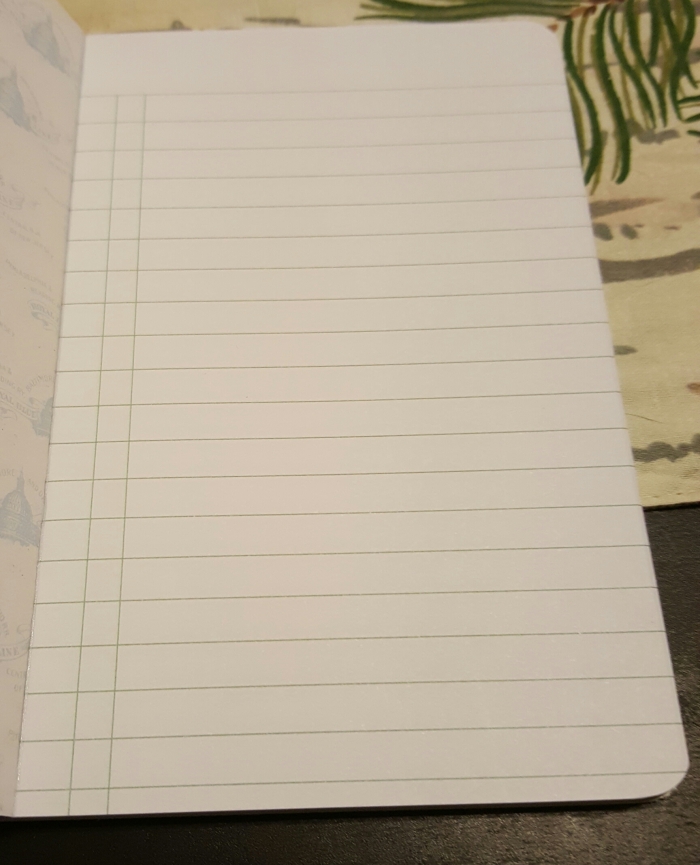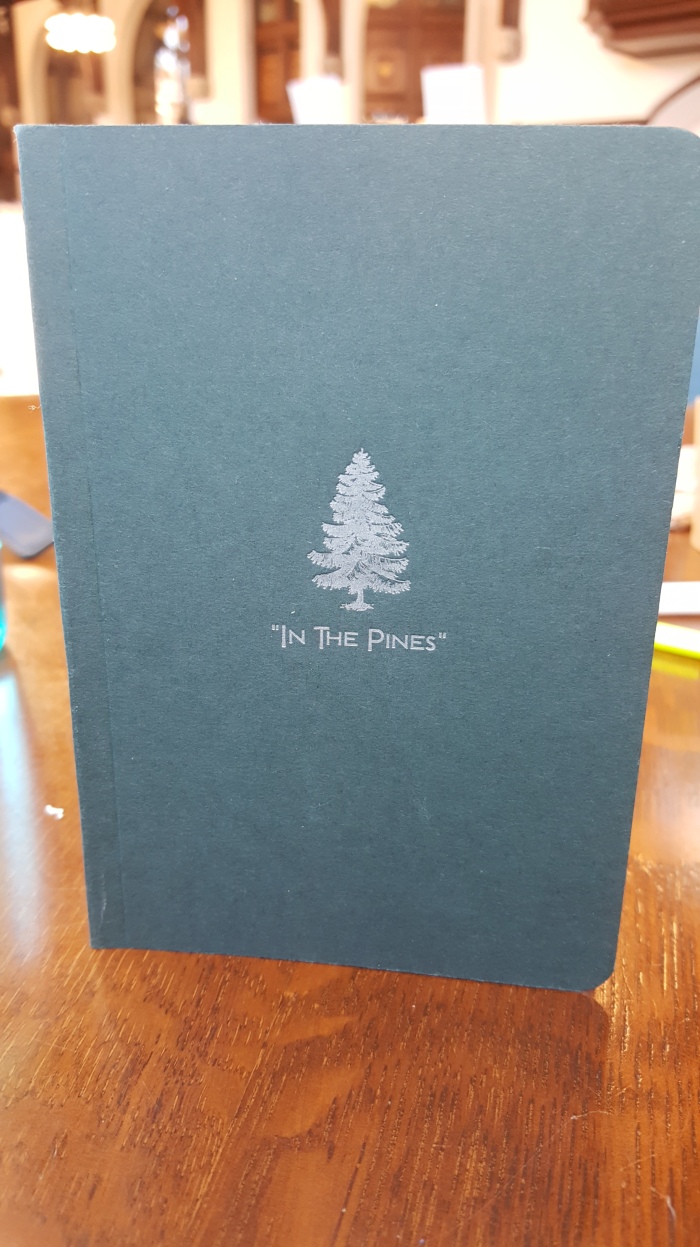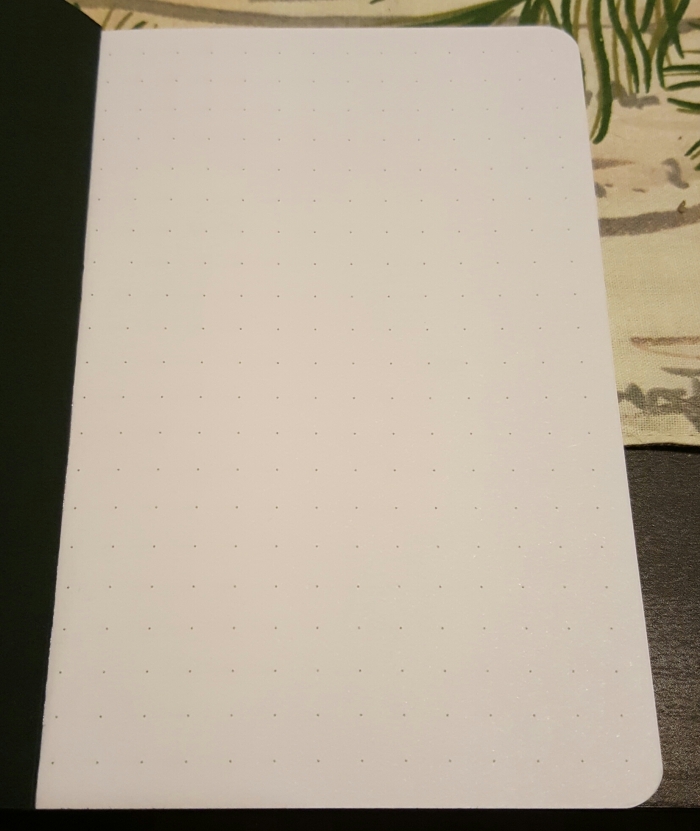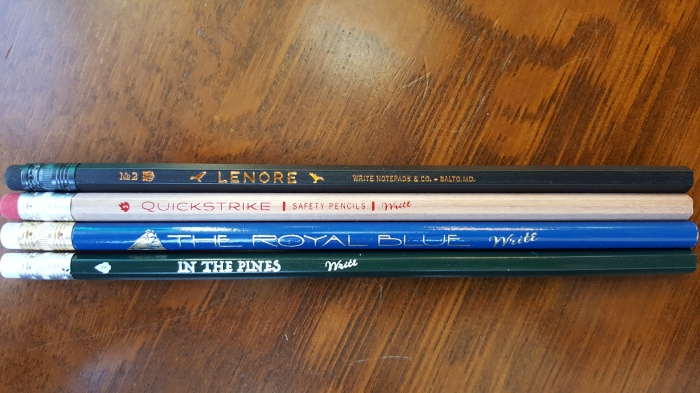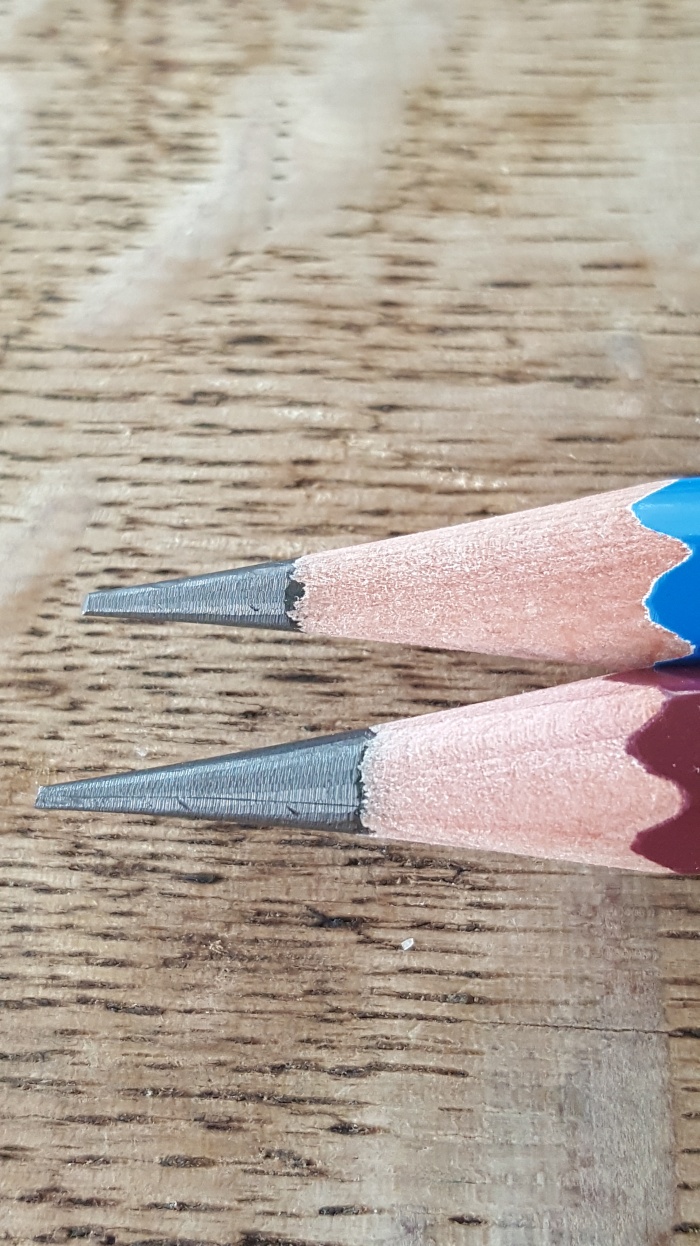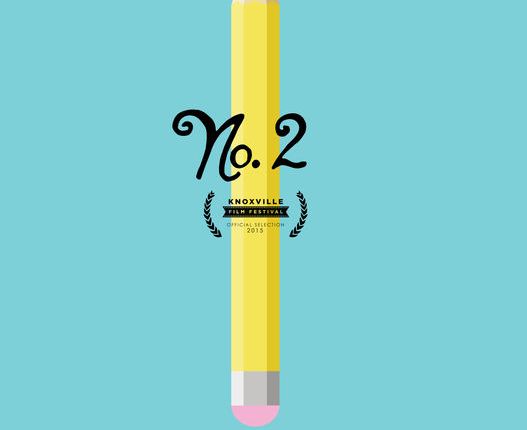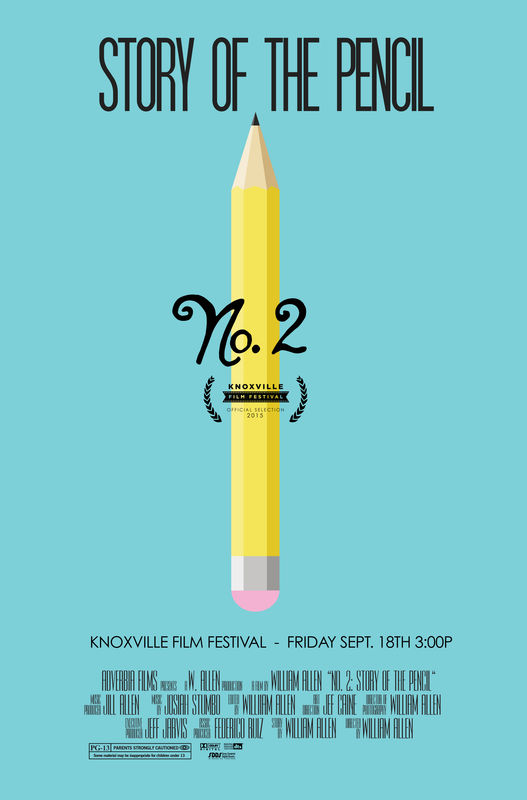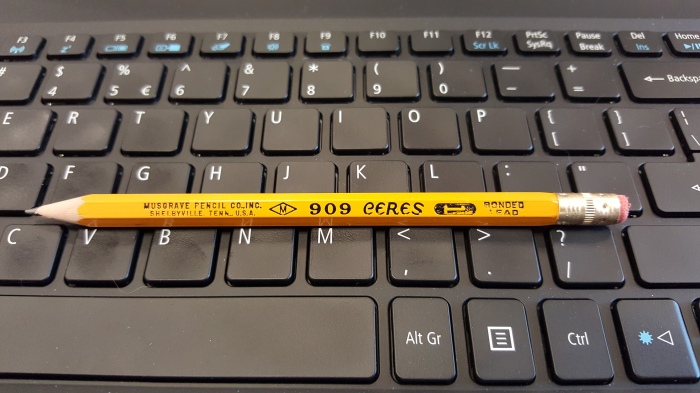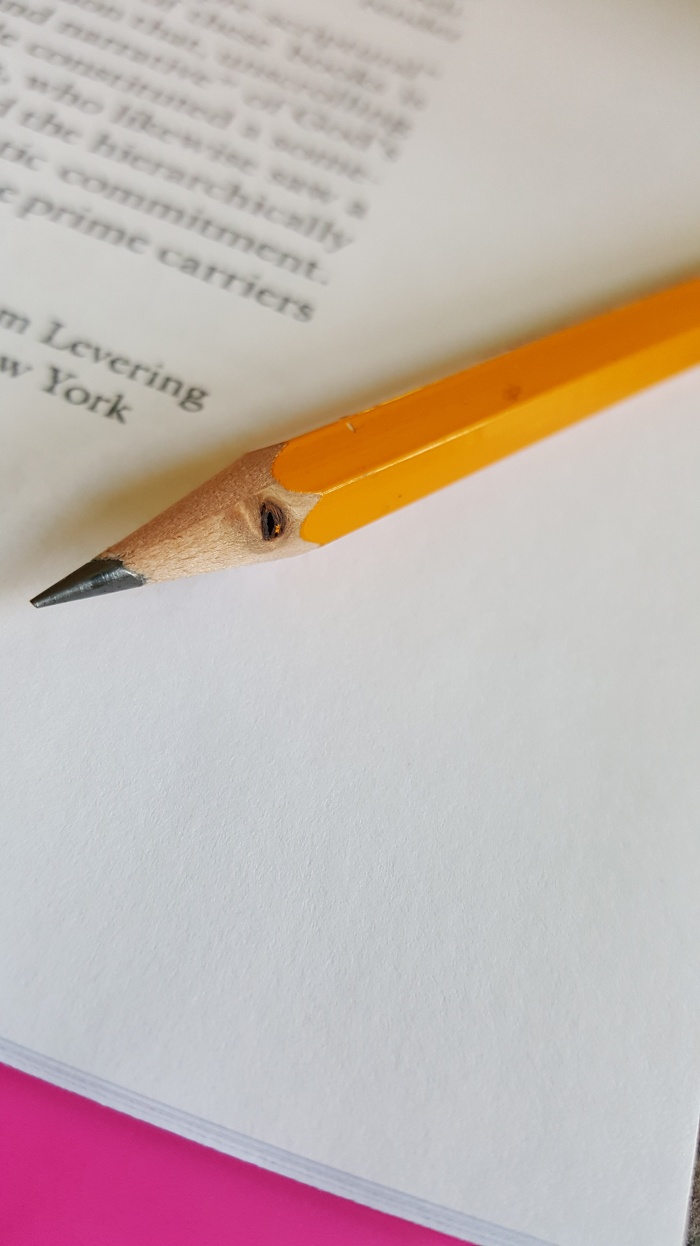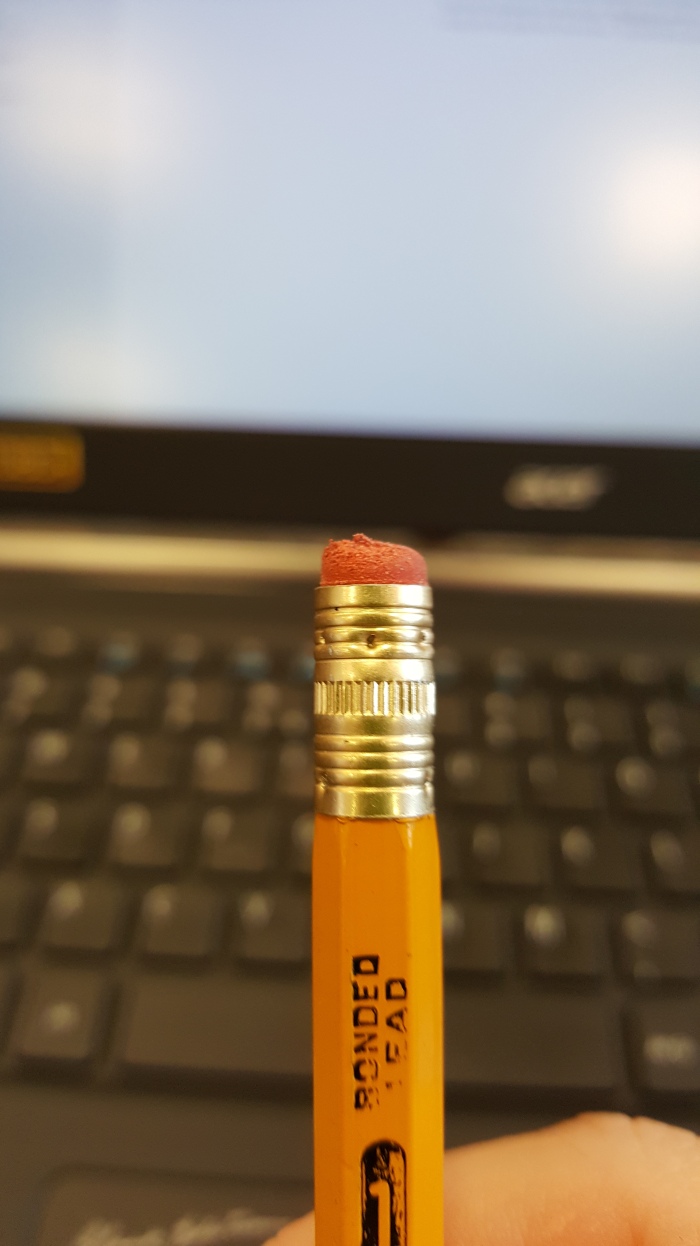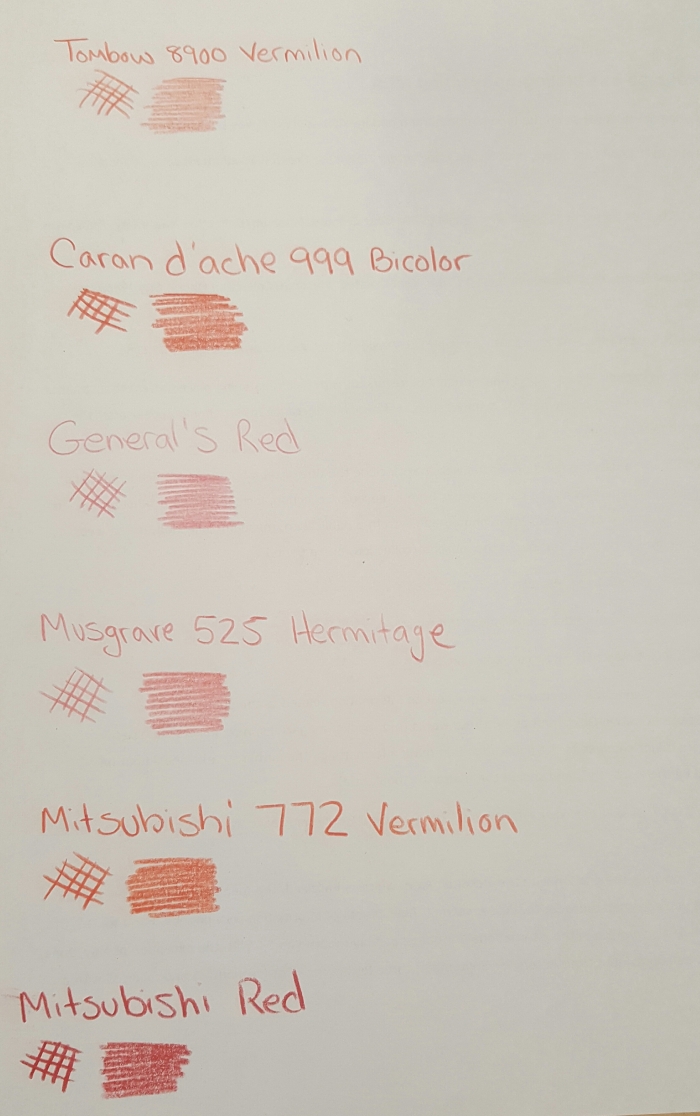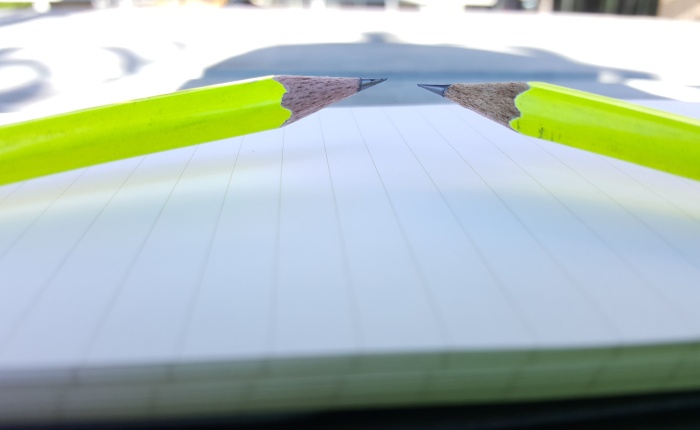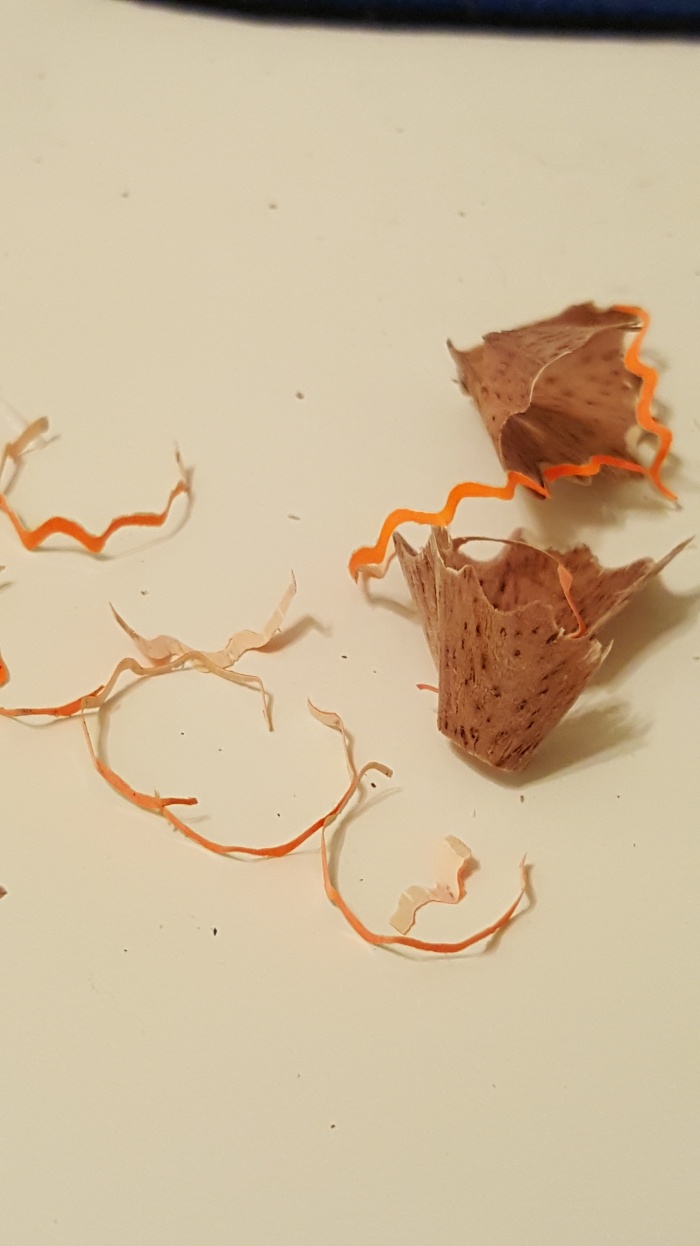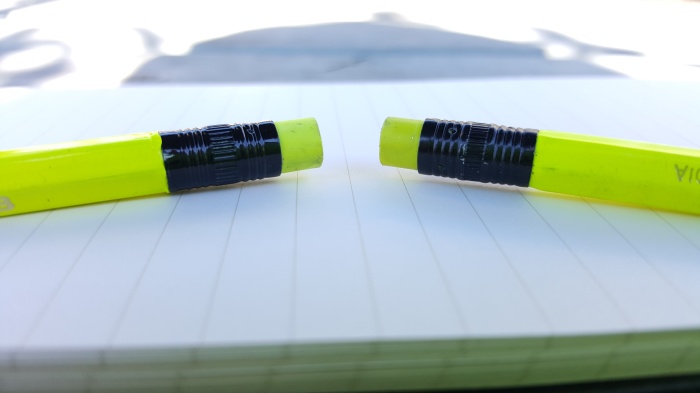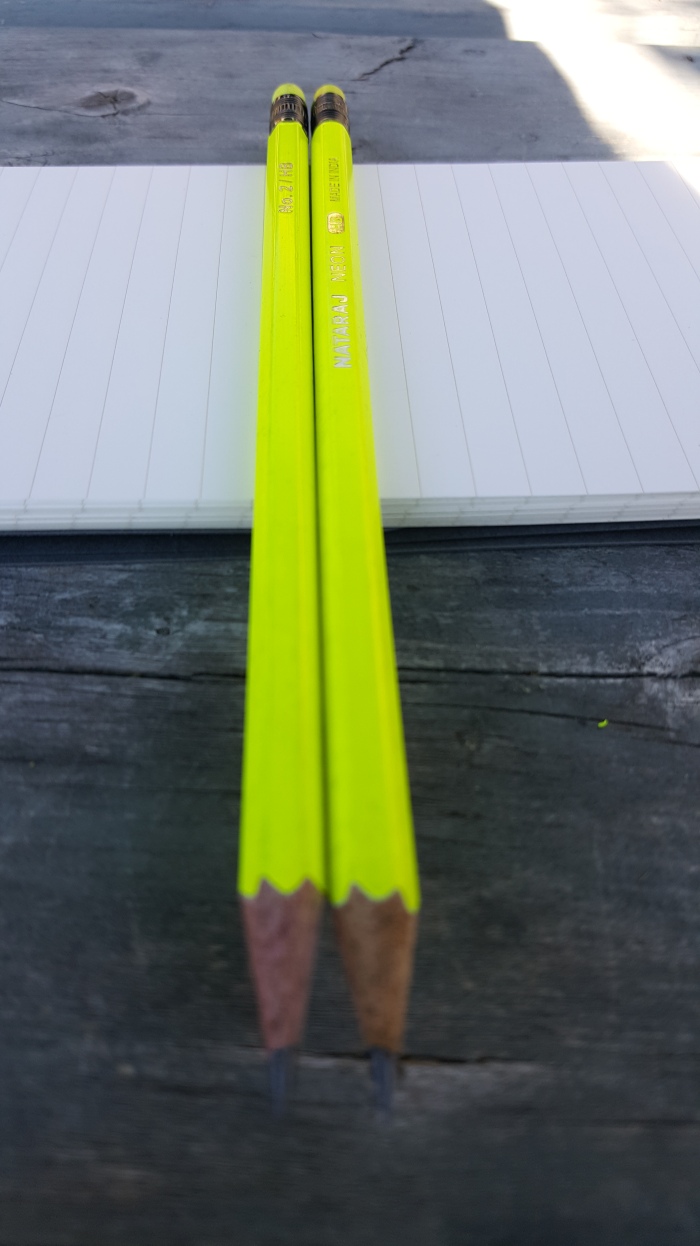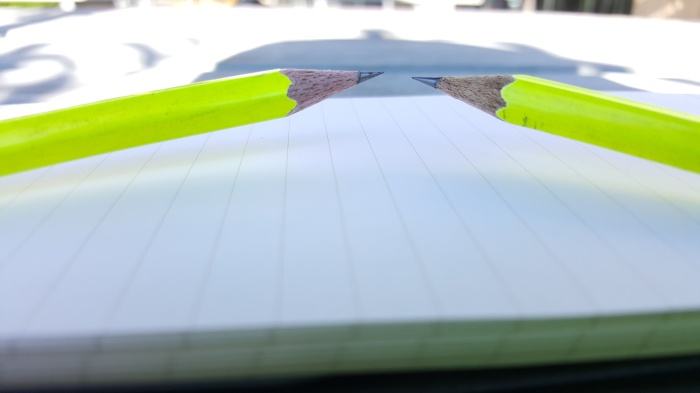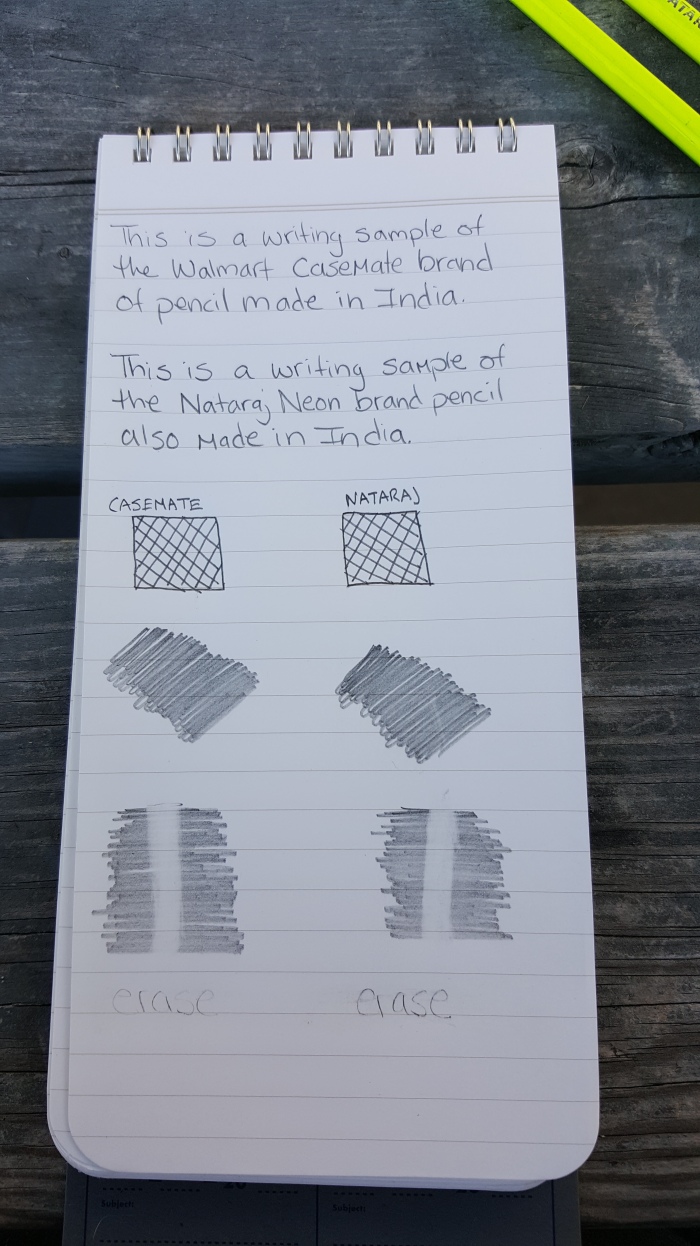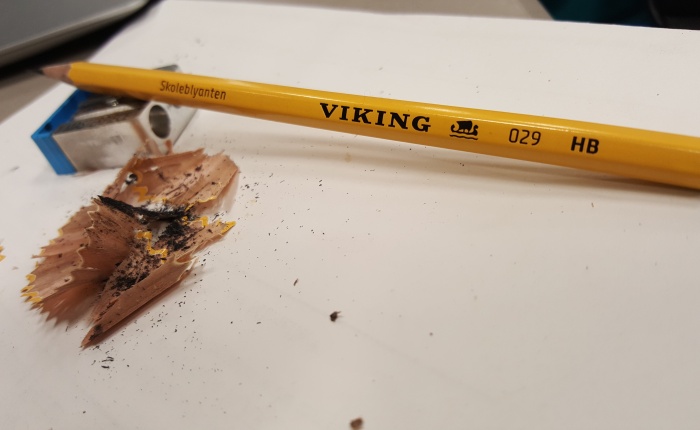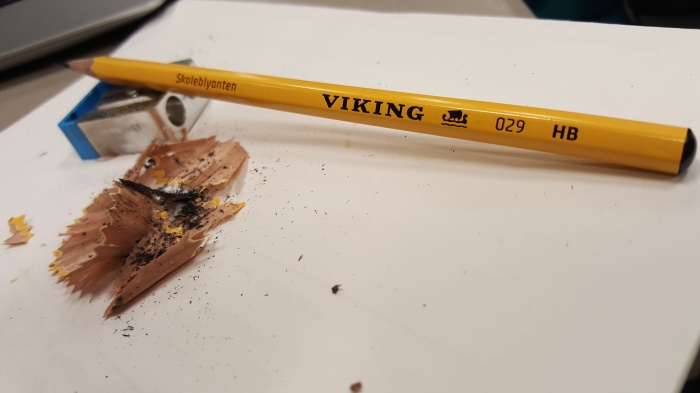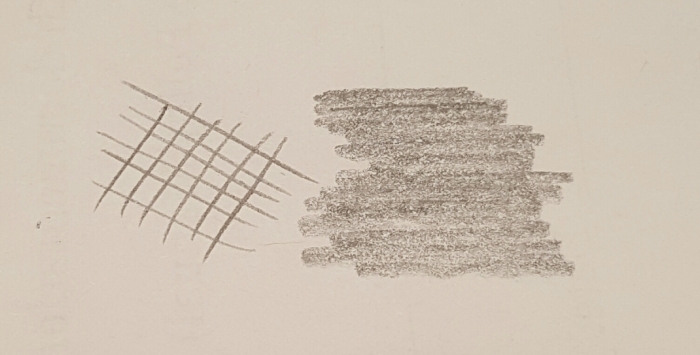The Musgrave round-up is first in a series of reviews I will do about all pencils (that are currently obtainable) in a specific brand. I often wonder if pencil companies that brand pencils with different names really have differences within each pencil. Besides aesthetics, do these different pencils have different cores? To test this out, I will take each pencil and write one full college ruled page and compare how each pencil feels while writing and how well it performs when it comes to erasing, smearing, and darkness. Before we get to the actual reviews, let’s talk about Musgrave as a company first.
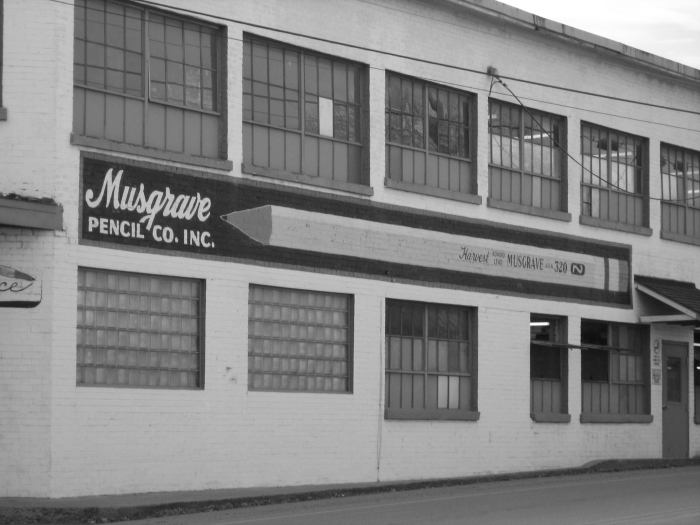
Musgrave has been making pencils in Shelbyville, Tennessee since 1916. Supplied by Tennessee red cedar and a system of recycling cedar rail fences for more modern wire, Musgrave had all the resources it needed. Musgrave not only bartered with farmers for the old cedar, but their crew installed the new wire and pole fencing that would be replacing that cedar. Since the cedar rails had been outdoors for an extended period of time, they were already weathered and in perfection condition. The cedar was cut into pencil slats that were sent from Tennessee to German manufacturers like Faber. In 1919, the Tennessee red cedar had been depleted and a new source needed to found. Luckily, a wood with similar characteristics from California, California Incense Cedar was shipped it. This new wood was fast growing, plentiful, and renewable. Musgrave held on as a company through the Great Depression and during World War II and still operates today in Shelbyville. One the few pencil manufacturers left in the United States, Musgrave is an example of how ingenuity and dedication to one’s product can last the test of time.
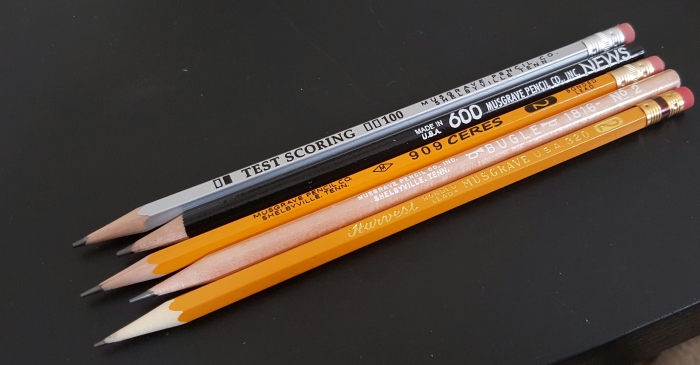
The pencils I will be talking about today are the ones that are easily available for purchase. There are other pencils in their lineup that I would have liked to try, but I am still waiting for a response from the company about how I can acquire those. I will update accordingly if that ever comes through. All pencils reviewed today were purchased via CW Pencil Enterprise. Please note that I am not comparing these pencils against each other– that would be unrealistic as these pencils have a variety of purposes. Instead, I have used each pencil for a period of time and have provided some feedback and thoughts on how each performed.
Bugle ($0.25)

The Bugle has a very simple design. It has a round, unpainted barrel with a thin clear overcoat with the word “BUGLE” and 1816 stamped in white. There are also two little bugles stamped on the pencil which make it completely adorable. There is no eraser and the pencil is very light in your hand. Based on the smell test, I do not think this pencil is made of cedar, but I could be mistaken. Writing with the Bugle produced a very loud scratchy sound, but not a scratchy feel. I felt it was a bit light for a number 2 pencil and because of this lightness it was very easy to erase. Point retention is amazing and I was able to fill an entire sheet of college ruled notebook paper before I had to sharpen again.

I would recommend this pencil for a few reasons. Aesthetically speaking, this pencil is great. I really like the bugles stamped into the side and I am a sucker for natural looking pencils. I personally don’t like round barreled pencils, but that’s just me. Also, the Bugle has wonderful point retention even though it is a bit lighter than I like for a number 2 pencil. As a furious note taker, I find myself having to sharpen a lot. This was not the case with the Bugle as it seemed to just keep going and going.
Harvest #2 ($0.35)

At first glance, the Harvest is your typical looking yellow school pencil. Upon further inspection, you can see that it is so much more than that. I have to admit, I am in love with the design of this pencil. It has a nice sharp hexagonal barrel (some hate this; I love it) and a thick coat of yellow lacquer. The typography of the word Harvest is wonderful and the other gold foil stamping has a nice, retro look to it. The Harvest advertises that it has “bonded lead” which means the core is glued right onto the barrel. This increases strength and decreases breakage. The ferrule of this pencil is great as well with a crimson brown stripe in the middle of it. It holds a bright pink eraser (that performs very meh). It appears the Harvest is made with white ash as it is much lighter in color than the other pencils in Musgrave’s line-up.
Sadly, the core of my pencil was a bit off-center so it sharpened unevenly, but not so much so that it impacted its performance. The Harvest wrote as dark as a number two pencil should and had average point retention. I was able to fill up an entire notebook page, but towards the end I found myself rotating the pencil a lot to get a sharper edge to write with. Don’t let my off center core dissuade you from picking up this pencil. It is beautiful! I would recommend not using the supplied eraser as it is pretty bad and feels as though you might rip your paper while using it.
Test Scoring 100 ($0.40)

The Test Scoring pencil produces a love/hate sentiment among users. Some like the sharp hex edge and shiny graphite lay down while other abhor it. Say what you will, but the Test Scoring pencil looks pretty rad. I like that there is “100” on the side of it almost encouraging you to do your best. The graphite composition of the Test Scoring pencil is artificial and is actually called electro-graphite. The reason this formulation is used is because it puts down a more reflective mark so the grading machines can pick up on it. It writes nice and dark and has a smooth feel while writing. Of course because of this darkness, point retention suffers. This may be fine for grade schoolers, but for post grads taking tests, sometimes pencil sharpening is not allowed so I’d bring a dozen or so pre-sharpened just in case.
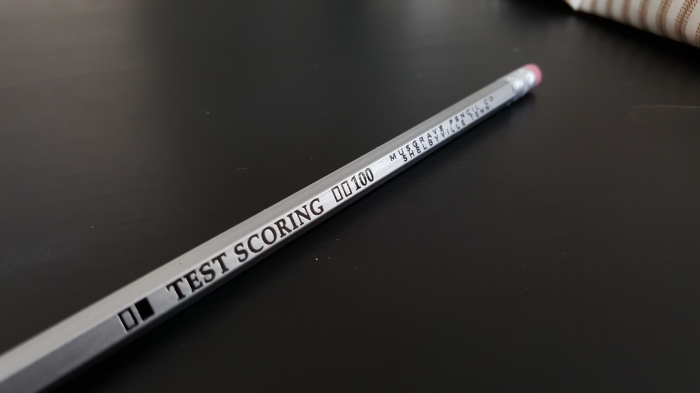
The eraser is shit. Seriously, it almost ripped my paper, I wouldn’t dare use this eraser on a Scantron for fear of ripping a hole right through the sheet. I wouldn’t recommend this pencil for heavy note taking since it dulls pretty quickly and smears a great deal. I do enjoy the sharp hex it offers, but I can’t see myself ever using this outside of its intended purpose. This pencil would be perfect for jotting down short notes or lists.
Ceres 909 ($0.40)

The Ceres is another one of Musgrave’s standard yellow school pencil offerings. It has the usual stamping of the Musgrave brand and then the word “Ceres” in a font that I know I’ve seen before, but I can’t remember what it’s called. It has a standard number two pencil kind of darkness and I’d place it somewhere in between the Bugle and the Harvest as far as darkness is concerned. Writing with the Ceres can be a mixed bag; at times it wrote pretty well with very little feedback, but at other times it was very scratchy. It was almost as if there were some kind of little chunks of something within the graphite because the scratchiness would go away after writing for a little bit.
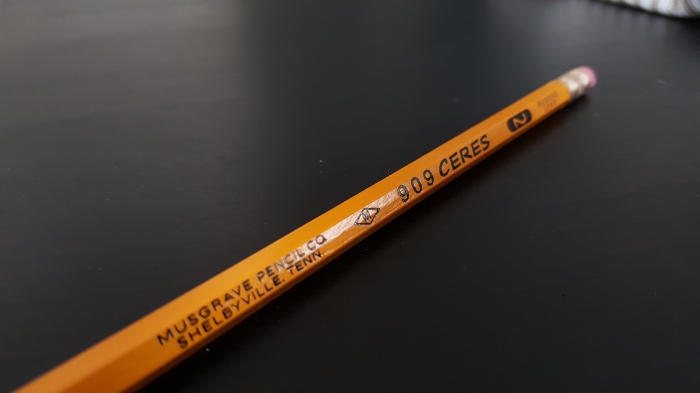
The graphite it does lay down is easily erased, but not by its own eraser. I mean you could erase it with the built-in eraser, but it is very rough on the paper. Also, the eraser disintegrates, but does not create any dust and instead kind of tears off in chunks. I wouldn’t say that this pencil is trash, but if it were in a pencil cup with others I would not reach for it unless I had to. It certainly is better that the garbage most offices order from Staples or WB Mason, but marginally. Musgrave really needs to work on their eraser game.
News 600 ($0.40)

The News 600 is not your standard writing pencil. You will have frustrating results if you try to use it for note taking– just don’t. It is super dark and soft; I’d say it would be around a 4B or so and it has a larger than normal core. Be careful with handling this pencil as pencils with larger cores can break if the pencil is dropped. Having a broken core inside a pencil will render it pretty much useless since when you sharpen it, the point will simply fall right out of the pencil. I would only recommend this pencil to be used by artists or if you are doing a newspaper crossword puzzle.
Final Thoughts
Musgrave is one the oldest pencil manufacturers still making pencils in the US. They offer a pretty large line up of pencils, but their main business seems to be in novelty pencils. I would say that for the cost of each pencil, you get what you pay for. If Musgrave made some small improvements like improving their erasers and moving back to using California cedar, they would be a contender for one of my favorite pencil companies. I love, love, love a sharp hex and Musgrave seems to be the only place that can offer that. Too bad small, easily remedied things make me not want to carry much of their stuff in my daily rotation. I mean, I love the Bugle, but it’s a round pencil, so unless I was all out of hexagonals I will not use it. One final thing for Musgrave: please update your logo. It’s bad. Please.
